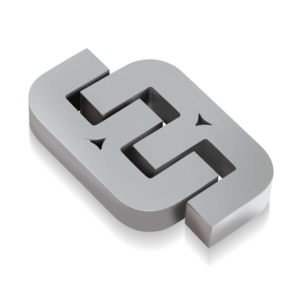
Understand the differences, advantages, and applications of core types to make informed decisions for your transformer design projects.
Overview of Transformer Core Types
Explanation of Popular Transformer Core Types
- Laminated Core : Description of laminated core construction involving stacked layers of steel sheets insulated from each other.
- Toroidal Core: Definition of toroidal core design featuring a ring-shaped magnetic core, often wound with wire.
- C-Core: Explanation of C-core configuration, characterized by a core with a C-shaped cross-section.
- E-Core: Overview of E-core design, distinguished by a core with an E-shaped cross-section.
Characteristics and Properties of Each Core Types
- Laminated Core: Discussion on the low eddy current losses and high efficiency of laminated cores due to their construction.
- Toroidal Core: Explanation of the compact design and reduced electromagnetic interference (EMI) associated with toroidal cores.
- C-Core: Description of the high permeability and uniform magnetic flux distribution in C-core transformers.
- E-Core: Overview of the improved winding space utilization and reduced copper losses in E-core transformers.
Definition and Construction of Laminated Cores
- Explanation of the laminated core structure comprising thin layers of silicon steel sheets stacked together.
- Description of the insulation between layers to prevent eddy currents and minimize energy losses.
Advantages and Disadvantages
- Advantages: Discussion on the low eddy current losses, high efficiency, and reduced noise associated with laminated cores.
- Disadvantages: Explanation of the higher manufacturing costs and limitations in high-frequency applications due to laminated core construction.
Applications and Use Cases
- Overview of the widespread use of laminated cores in power transformers, distribution transformers, and other electrical equipment.
- Discussion on specific applications where the advantages of laminated cores, such as low losses and noise, are particularly beneficial.
Definition and Structure of Toroidal Cores
- Explanation of the toroidal core’s doughnut-shaped structure, consisting of a continuous ring or loop of magnetic material.
- Description of how the winding wire is wrapped directly around the toroidal core, providing a compact and efficient design.
Advantages and Disadvantages
- Advantages: Discussion on the toroidal core’s compact size, reduced magnetic flux leakage, and high efficiency due to the absence of air gaps.
- Disadvantages: Explanation of the challenges in manufacturing and winding the toroidal core, resulting in higher production costs compared to other core types.
Definition and Design of C-Core Transformers
- Introduction to the C-core transformer’s unique design featuring a C-shaped magnetic core structure.
- Explanation of the construction method involving two parallel magnetic paths connected by a cross-section, facilitating efficient magnetic flux distribution.
Advantages and Disadvantages
- Advantages:
- Discussion on reduced magnetic flux leakage due to the closed magnetic circuit, enhancing overall efficiency.
- Highlighting lower core losses compared to other core types, leading to improved energy efficiency.
- Mentioning compact design and better thermal performance, suitable for space-constrained applications.
- Disadvantages:
- Explanation of potential challenges in manufacturing and assembly due to the complex core shape, resulting in increased production costs.
- Addressing limitations in scalability for high-voltage or high-power applications due to core size constraints.
Definition and Structure of E-Core Transformers
- Introduction to E-core transformers characterized by their E-shaped magnetic core structure.
- Explanation of the core’s design, featuring two parallel legs connected by a central section, providing a closed magnetic circuit.
Advantages and Disadvantages
- Advantages:
- Discussion on improved magnetic flux distribution and reduced magnetic flux leakage due to the closed magnetic path, enhancing efficiency.
- Highlighting compact design and reduced core losses compared to other core types, contributing to energy efficiency.
- Mentioning versatility and suitability for a wide range of applications, including power transformers, inductors, and chokes.
- Disadvantages:
- Addressing potential challenges in manufacturing and assembly due to the complex core shape, leading to increased production costs.
- Noting limitations in scalability for high-voltage or high-power applications due to core size constraints.
Other Types of Transformer Cores
Overview of Less Common Core Types
In addition to the more widely used transformer core types like laminated, toroidal, C-core, and E-core, there exist lesser-known core types such as shell cores and drum cores. These alternative core designs offer distinct features and characteristics that cater to specific application requirements.
Shell cores, for instance, are characterized by their cylindrical shape with a hollow center. This unique configuration allows for efficient magnetic flux distribution and reduces eddy current losses. On the other hand, drum cores feature a cylindrical shape with a solid core, providing enhanced mechanical stability and lower winding resistance compared to other core types.
Specialized Applications and Considerations
These less common core types find specialized applications in various fields, particularly in high-frequency transformers, RF filters, and audio transformers. Their unique properties make them well-suited for applications where compact size, minimal winding resistance, or precise impedance matching is crucial.
However, utilizing shell cores and drum cores comes with its set of considerations and challenges. Manufacturing these cores can be more complex and costly due to their intricate designs and specialized production processes. Additionally, while these core types offer specific advantages, they may also present performance trade-offs, such as reduced efficiency or increased material costs.
Despite these challenges, engineers and designers often leverage the unique properties of shell cores and drum cores to address specific engineering requirements or overcome limitations associated with traditional core designs. Through careful consideration and optimization, these less common core types contribute to the diversity and innovation within the realm of transformer core technology.